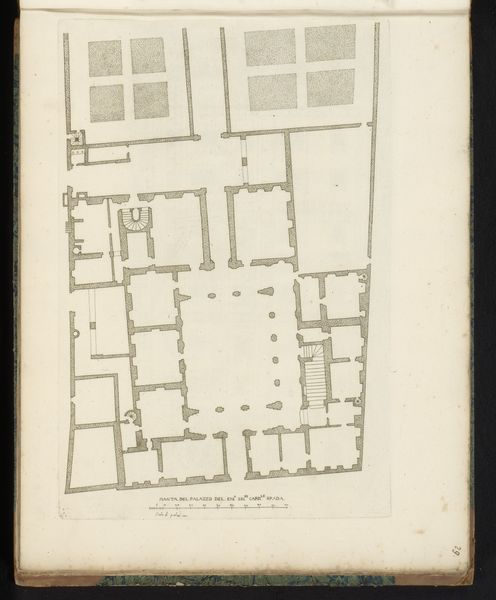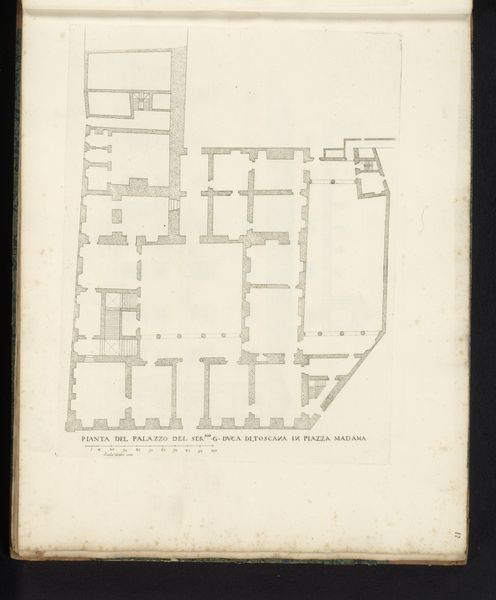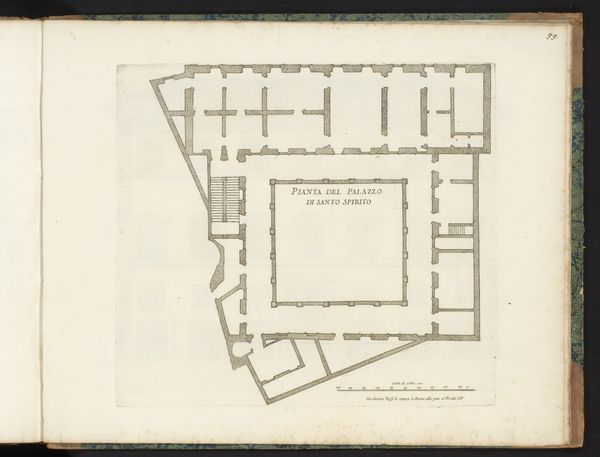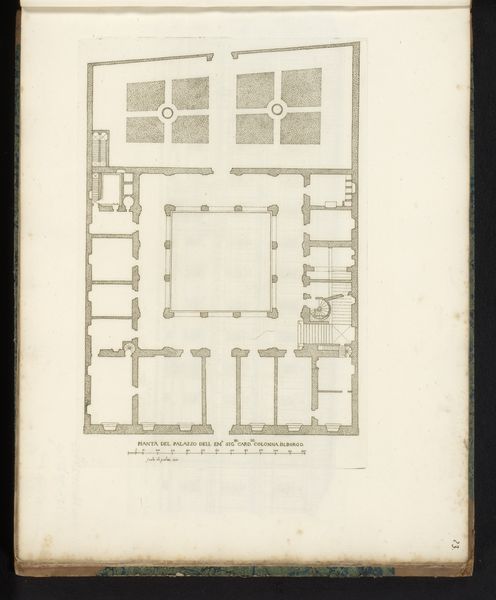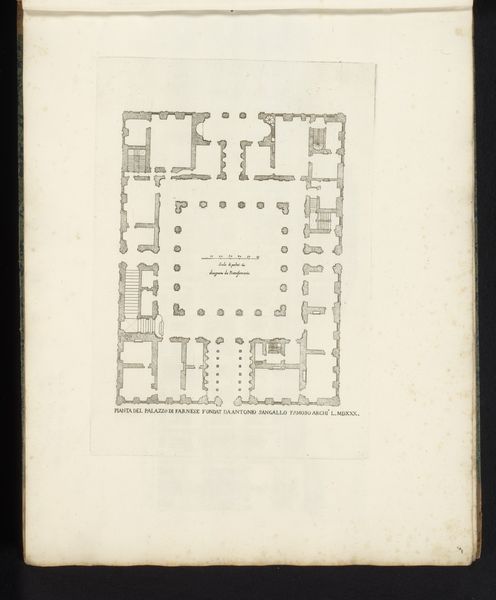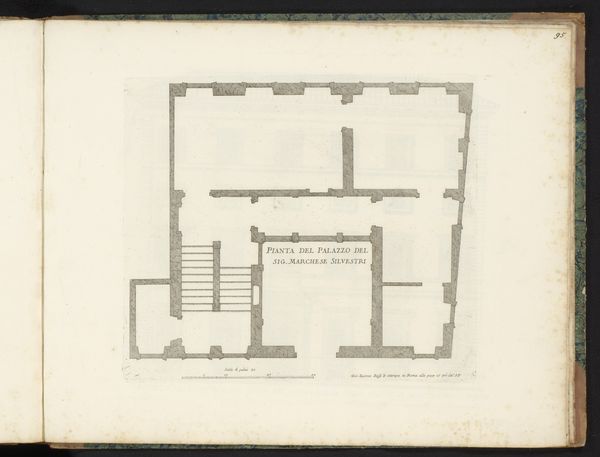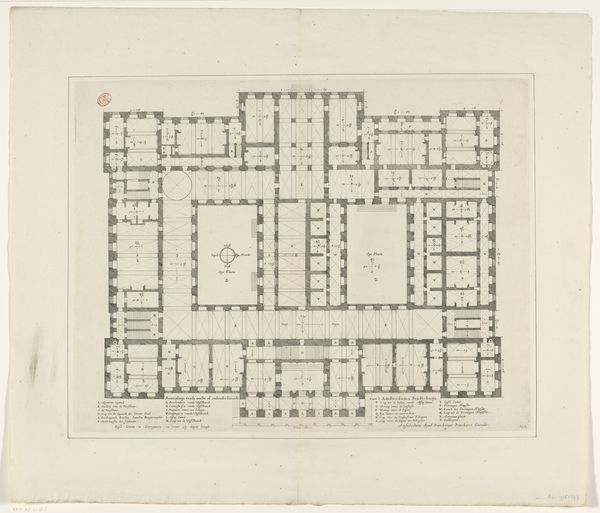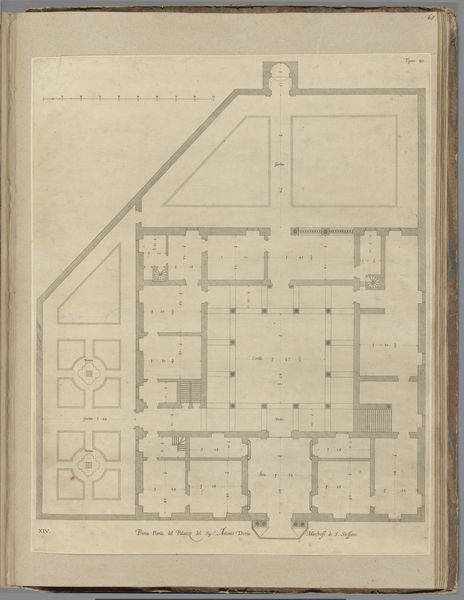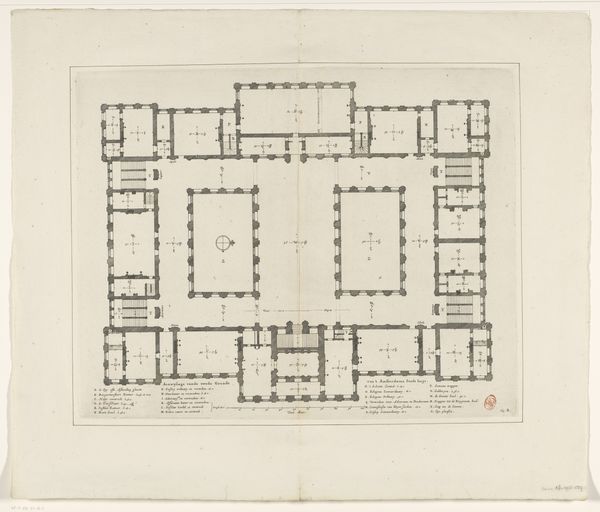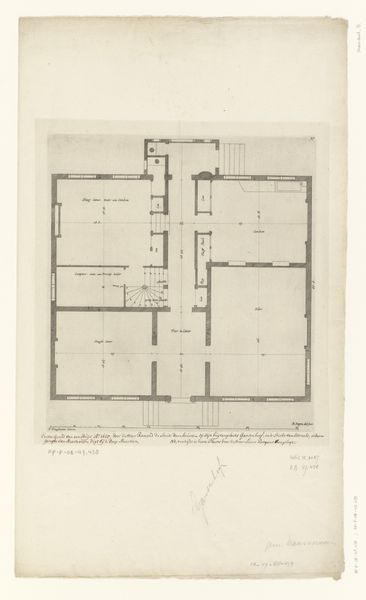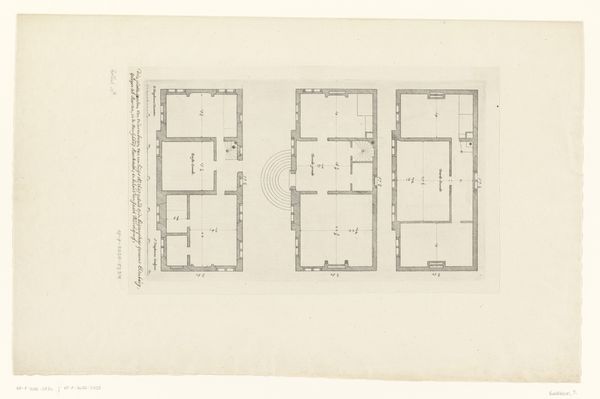
print, etching, architecture
# print
#
etching
#
geometric
#
line
#
cityscape
#
italian-renaissance
#
architecture
Dimensions: height 364 mm, width 277 mm
Copyright: Rijks Museum: Open Domain
Editor: Here we have Giovanni Battista Falda’s "Plattegrond van Palazzo Giustiniani," made after 1655. It’s a print, an etching actually, depicting an architectural plan. I’m immediately struck by how the line work and geometric shapes create a sense of order and…well, impressive opulence, even in this format. What are your initial thoughts on the historical context and purpose of this work? Curator: Well, seeing this plan allows us a peek into the socio-political power structures of the time. The Palazzo Giustiniani, clearly meant to impress, served not only as a residence but as a stage for projecting wealth and influence. What do you think this plan reveals about the lifestyle of those who inhabited it? Editor: The scale! Imagine navigating all those rooms. The plan makes me think about how carefully they designed social encounters through architecture, separating public spaces from more private ones. Do you see evidence of that in the plan itself? Curator: Precisely! Consider the placement of staircases and corridors. These elements subtly guided movement, controlling access and dictating who could go where. Also, think about who this plan was created for and its broader influence; was it for internal use only, or intended as propaganda too? Editor: That makes me think about the power dynamic implicit in even creating this detailed plan—the owners wanted to represent and solidify their status. I hadn’t thought about the politics of representation in architectural drawings. Curator: It’s all about how the image serves as a form of social currency. The circulation of these prints amplified the Palazzo’s significance beyond its physical location, reinforcing the family's social standing. What is more captivating: The family that is represented, or the visual language in how they are represented? Editor: That’s fascinating. I’m starting to see this artwork less as a technical drawing and more as a political statement disguised as architectural documentation. Thank you for helping me view it that way! Curator: Indeed. Reflecting on this artwork reveals how even seemingly neutral representations can be deeply embedded within power structures.
Comments
No comments
Be the first to comment and join the conversation on the ultimate creative platform.
